
Home - Search - Browse - Alphabetic Index: 0- 1- 2- 3- 4- 5- 6- 7- 8- 9
A- B- C- D- E- F- G- H- I- J- K- L- M- N- O- P- Q- R- S- T- U- V- W- X- Y- Z
Oscar
 PCSat |
AKA: Amsat;Arsene;Australis;Eyesat;Idefix;IHamsat;ITAMsat;JAS;LuSat;Microsat;Orbiting Satellite Carrying Amateur Radio;PACSAT;PCSat;Phase;UNAMSAT;VUSat;Webersat;Xi Wang. Status: Operational 1961. First Launch: 1961-12-12. Last Launch: 2009-12-15. Number: 28 .
More at: Oscar.
| OSCAR 1, 2 Amateur radio communication satellite for Project OSCAR, USA. Launched 1961-1962. |
| OSCAR 3 Amateur radio communication satellite for Project OSCAR, USA. Launched 1965. |
| OSCAR 4 Amateur radio communication satellite for TRW Radio Club of Redondo Beach, California, USA. Launched 1965. |
Family: Amateur radio communications satellite, Communications. Country: USA. Spacecraft: Oscar, SSTL-70, Informator, Kitsat, Athena Mars Flyby, PS Model. Launch Vehicles: Titan, Thor, Delta, R-7, Titan IIIC, R-14, Thor Agena B, Thor Agena D, Thor SLV-2 Agena D, Kosmos 3, Kosmos 11K65M, Thor Delta N, Thor Delta N6, Delta 0300, Soyuz-U, Ariane 1, Delta 2310, Delta 2910, Ariane, Topol', Delta 3920, Ariane 4, Soyuz-U-PVB, Delta 0100, H-1, Ariane 44LP, Ariane 40, Ariane 42P, Ariane 42L, PSLV, Start, Athena-1, Ariane 5, Ariane 5G, Delta 2000, Chang Zheng 4C. Launch Sites: Cape Canaveral, Vandenberg, Baikonur, Baikonur LC1, Plesetsk, Vandenberg SLC1W, Vandenberg SLC2W, Cape Canaveral LC41, Tanegashima, Kourou, Plesetsk LC132/1, Sriharikota, Tanegashima N, Kourou ELA1, Taiyuan, Kourou ELA2, Plesetsk LC158, Kourou ELA3, Kodiak, Sriharikota SLP. Agency: USAF, RVSN, MO, AMSAT, ESA, Surrey, Weber, Arianespace, JA. Bibliography: 2, 279, 296, 4, 5, 552, 554, 6.
 | Oscar 29 Credit: Manufacturer Image |
 | Eyesat 1 Credit: Manufacturer Image |
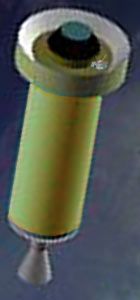 | Idefix Credit: Manufacturer Image |
 | ITAMsat Credit: Manufacturer Image |
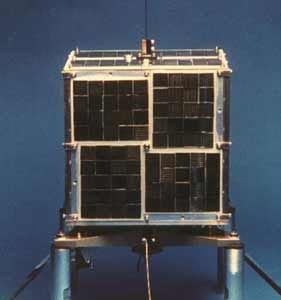 | Oscar 19 Credit: Manufacturer Image |
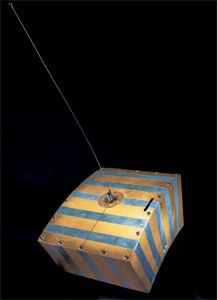 | Oscar 1 Credit: Manufacturer Image |
 | Oscar 3 Credit: Manufacturer Image |
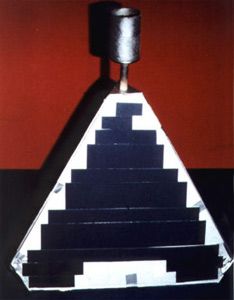 | Oscar 4 Credit: Manufacturer Image |
 | Oscar 16 Credit: Manufacturer Image |
 | Oscar 18 Credit: Manufacturer Image |
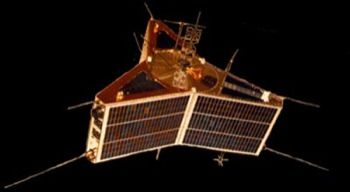 | Amsat Phase 3A Credit: Manufacturer Image |
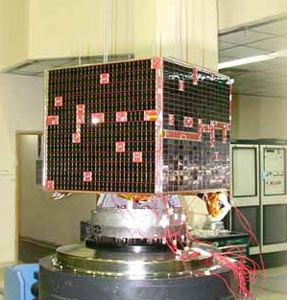 | VUSat Credit: Manufacturer Image |
 | PCSat Credit: Manufacturer Image |
1961 December 12 - . 20:40 GMT - . Launch Site: Vandenberg. Launch Complex: Vandenberg SLC1W. LV Family: Thor. Launch Vehicle: Thor Agena B.
- Oscar 1 - .
Mass: 5.00 kg (11.00 lb). Nation: USA.
Agency: USAF.
Program: Oscar.
Class: Communications.
Type: Amateur radio communications satellite. Spacecraft: Oscar.
Decay Date: 1962-01-31 . USAF Sat Cat: 214 . COSPAR: 1961-A-Kappa-2. Apogee: 474 km (294 mi). Perigee: 245 km (152 mi). Inclination: 81.20 deg. Period: 91.80 min.
The first Oscar Phase I amateur satellite was launched piggyback with Discover 36. A group of enthusiasts in California formed Project OSCAR and persuaded the United States Air Force to replace ballast on the Agena upper stage with the 4.5 kg OSCAR I package. The satellite was box shaped with a single monopole antenna and battery powered. The 140 mW transmitter onboard discharged its batteries after three weeks. 570 Amateurs in 28 countries reported receiving its simple 'HI-HI' morse code signals on the VHF 2 meter band (144.983 MHz) until January 1, 1962. The speed of the HI-HI message was controlled by a temperature sensor inside the spacecraft. OSCAR I re-entered the atmosphere January 31, 1962 after 312 revolutions. Additional Details: here....
1962 June 2 - . 00:31 GMT - . Launch Site: Vandenberg. Launch Complex: Vandenberg SLC1W. LV Family: Thor. Launch Vehicle: Thor Agena B.
- Oscar 2 - .
Mass: 10 kg (22 lb). Nation: USA.
Agency: USAF.
Program: Oscar.
Class: Communications.
Type: Amateur radio communications satellite. Spacecraft: Oscar.
Decay Date: 1962-06-21 . USAF Sat Cat: 305 . COSPAR: 1962-Chi-2. Apogee: 339 km (210 mi). Perigee: 188 km (116 mi). Inclination: 74.20 deg. Period: 89.80 min.
OSCAR II was launched piggyback with a United States Air Force satellite. OSCAR II was very similar to OSCAR I. Differences included (1) changing the surface thermal coatings to achieve a cooler internal spacecraft environment, (2) modifying the sensing system so the satellite temperature could be measured accurately as the batteries decayed, and (3) lowering the transmitter power output to 100 mW to extend the life of the onboard battery. OSCAR II lasted 18 days ceasing operation on June 20, 1962 and re-entered June 21, 1962.
1965 March 9 - . 18:29 GMT - . Launch Site: Vandenberg. Launch Complex: Vandenberg SLC2W. LV Family: Thor. Launch Vehicle: Thor SLV-2 Agena D.
- Oscar 3 - .
Mass: 14 kg (30 lb). Nation: USA.
Agency: OSCAR.
Program: Oscar.
Class: Communications.
Type: Amateur radio communications satellite. Spacecraft: Oscar.
USAF Sat Cat: 1293 . COSPAR: 1965-016F. Apogee: 900 km (550 mi). Perigee: 876 km (544 mi). Inclination: 70.10 deg. Period: 102.80 min.
OSCAR III was launched piggyback with seven United States Air Force satellites. Weight 16.3 kg. It was the first amateur satellite to operate from solar power and relay signals from Earth. OSCAR III was the first true amateur satellite relaying voice contacts in the VHF 2 meter band through a 1 W 50 kHz wide linear transponder (146 MHz uplink and 144 MHz downlink). OSCAR III's transponder lasted 18 days. More than 1000 amateurs in 22 countries communicated through the linear transponder. The two beacon transmitters continued operating for several months.
Note: Designed, built, and tested, a predecssor, OSCAR* was never launched. Similar in design to OSCAR I and II, OSCAR* contained a 250 mW beacon with phase-coherent keying. OSCAR* was never launched as the workers decided to focus their efforts on the first relay satellite -- OSCAR III.
1965 December 21 - . 14:00 GMT - . Launch Site: Cape Canaveral. Launch Complex: Cape Canaveral LC41. LV Family: Titan. Launch Vehicle: Titan IIIC.
- Oscar 4 - .
Mass: 13 kg (28 lb). Nation: USA.
Agency: OSCAR.
Program: Oscar.
Class: Communications.
Type: Amateur radio communications satellite. Spacecraft: Oscar.
Decay Date: 1976-04-12 . USAF Sat Cat: 1902 . COSPAR: 1965-108C. Apogee: 33,549 km (20,846 mi). Perigee: 162 km (100 mi). Inclination: 26.80 deg. Period: 587.50 min.
OSCAR IV was launched piggyback with three United States Air Force satellites. The launch vehicle had a partial failure and placed the spacecraft in a low orbit preventing widespread amateur use. Orbit 29120 x 168 km. Inclination 26.8 degrees. Period 587.5 minutes. Weight 18.1 kg. Four monopole antennas. OSCAR IV was built by the TRW Radio Club of Redondo Beach, California. It had a 3 Watt 10 kHz wide linear transponder (144 MHz uplink and 432 MHz downlink). In operation until March 16, 1966. Re-entry April 12, 1976. Total operation 85 days. OSCAR IV provided the first US-Soviet amateur link.
1970 January 23 - . 11:31 GMT - . Launch Site: Vandenberg. Launch Complex: Vandenberg SLC2W. LV Family: Thor. Launch Vehicle: Thor Delta N6.
- Oscar 5 - .
Payload: Australis-Oscar 5. Mass: 18 kg (39 lb). Nation: Australia.
Agency: Clemson.
Program: Oscar.
Class: Communications.
Type: Amateur radio communications satellite. Spacecraft: Oscar.
USAF Sat Cat: 4321 . COSPAR: 1970-008B. Apogee: 1,478 km (918 mi). Perigee: 1,434 km (891 mi). Inclination: 101.80 deg. Period: 115.00 min.
Australis-OSCAR 5 was launched piggyback with ITOS-1 (TIROS-M weather satellite. Weight 17.7 kg (9 kg of which was battery mass). Box shaped 304 x 431 x 152 mm. 2 meter monopole and 10 meter dipole antennas. It was the first amateur satellite to be remotely controlled. Built by students at The University of Melbourne, Melbourne, Victoria, Australia. Battery powered, Australis-OSCAR 5 transmitted telemetry on both 2 meter (144.050 MHz at 50 mW) and 10 meter (29.450 MHz at 250 mW) bands that operated for 23 and 46 days respectively. Passive magnetic attitude stabilization was performed by carrying two bar magnets to align with the Earth's magnetic field in order to provide a favorable antenna footprint. The University of Melbourne compiled tracking reports from hundreds of stations in 27 countries.
1972 October 15 - . 17:19 GMT - . Launch Site: Vandenberg. Launch Complex: Vandenberg SLC2W. LV Family: Thor. Launch Vehicle: Delta 0300.
- Oscar 6 - .
Payload: Amsat-Oscar-6. Mass: 16 kg (35 lb). Nation: USA.
Agency: AmSat.
Program: Oscar.
Class: Communications.
Type: Amateur radio communications satellite. Spacecraft: Oscar.
USAF Sat Cat: 6236 . COSPAR: 1972-082B. Apogee: 1,455 km (904 mi). Perigee: 1,449 km (900 mi). Inclination: 101.70 deg. Period: 114.90 min.
AMSAT-OSCAR 6 was launched piggyback with ITOS-D (NOAA 2). AO-6 was the first phase 2 satellite (Phase II-A). Weight 16 kg. Box shaped 430 x 300 x 150 mm. Quarter-wave monopole antennas (144 and 435 MHz) and half-wave dipole antenna (29 MHz). Firsts: complex control system using discrete logic; satellite-to-satellite relay communication via AO-7; demonstrated doppler-location of ground station for search and rescue; demonstrated low-cost medical data relay from remote locations. Equipped with solar panels powering NiCd batteries, AO-6 provided 24 V at 3.5 W power to three transponders. It carried a Mode A transponder (100 kHz wide at 1 W) and provided store-and-forward morse and teletype messages (named Codestore) for later transmission. AO-6 lasted 4.5 years until a battery failure ceased operation on June 21, 1977. Subsystems were built in the United States, Australia, and Germany.
1974 November 15 - . 17:11 GMT - . Launch Site: Vandenberg. Launch Complex: Vandenberg SLC2W. LV Family: Thor. Launch Vehicle: Delta 2310.
- Oscar 7 - .
Payload: Amsat-Oscar-7. Mass: 29 kg (63 lb). Nation: USA.
Agency: AmSat.
Program: Oscar.
Class: Communications.
Type: Amateur radio communications satellite. Spacecraft: Oscar.
USAF Sat Cat: 7530 . COSPAR: 1974-089B. Apogee: 1,459 km (906 mi). Perigee: 1,440 km (890 mi). Inclination: 101.80 deg. Period: 114.90 min.
AMSAT-OSCAR 7 was launched piggyback with ITOS-G (NOAA 4) and the Spanish INTASAT. The second phase 2 satellite (Phase II-B). Weight 28.6 kg. Octahedrally shaped 360 mm high and 424 mm in diameter. Circularly polarized canted turnstile VHF/UHF antenna system and HF dipole. Firsts: Satellite-to-satellite relay communication via AO-6; Early demonstrations of low-budget medical data relay and doppler location of ground transmitters for search-and-rescue operations were done using this satellite. AO-7 was fully operational for 6.5 years until a battery failed in mid 1981. However the satellite was still functional in day-side passes when its ever-degrading solar cells could function, and was still responding to amateurs as of August 2006. Additional Details: here....
1978 March 5 - . 17:54 GMT - . Launch Site: Vandenberg. Launch Complex: Vandenberg SLC2W. LV Family: Thor. Launch Vehicle: Delta 2910.
- Oscar 8 - .
Payload: Amsat-Oscar-8. Mass: 27 kg (59 lb). Nation: USA.
Agency: AmSat.
Program: Oscar.
Class: Communications.
Type: Amateur radio communications satellite. Spacecraft: Oscar.
USAF Sat Cat: 10703 . COSPAR: 1978-026B. Apogee: 903 km (561 mi). Perigee: 894 km (555 mi). Inclination: 99.20 deg. Period: 103.00 min.
AMSAT-OSCAR 8 was launched piggyback with LandSat 3 (ERTS 3) and PIX. The third phase 2 satellite (Phase II-D). Weight 27.2 kg. Box shaped, 33 cm high, 38 x 38 cm. Circularly polarized VHF canted turnstile, UHF quarter wave monopole, and HF half-wave dipole antenna system. Another cooperative international effort (United States, Canada, Germany and Japan). AO-8 had a similar store-and-forward service as AO-7 and carried Mode A (145.850-900 MHz uplink and 29.400-500 MHz downlink) and Mode J (145.900-146.000 MHz uplink and 435.100 MHz downlink (inverted)) linear transponders and telemetry beacons on 435.095 MHz and 29.402 MHz. AO-8's primary mission was for educational applications and amateur communications. It was in operation for six years until the battery failed on June 24, 1983.
1980 May 23 - . 14:29 GMT - . Launch Site: Kourou. Launch Complex: Kourou ELA1. LV Family: Ariane. Launch Vehicle: Ariane 1. FAILURE: Failure.
- Amsat Phase 3A - . Payload: Amsat Phase 3A. Nation: USA. Agency: ESA. Program: Oscar. Spacecraft: Oscar. The satellite never obtained orbit. Weight 92.2 kg. Mode B (435 MHz uplink and 145 MHz downlink) transponder and 145 MHz beacon. VHF and UHF helix wide beam antenna..
1981 October 6 - . 11:27 GMT - . Launch Site: Vandenberg. Launch Complex: Vandenberg SLC2W. LV Family: Thor. Launch Vehicle: Delta 2310.
- Oscar 9 - .
Payload: UoSAT 1. Mass: 52 kg (114 lb). Nation: UK.
Agency: Surrey.
Manufacturer: Surrey.
Program: Oscar.
Class: Communications.
Type: Amateur radio communications satellite. Spacecraft: SSTL-70.
Decay Date: 1989-10-13 . USAF Sat Cat: 12888 . COSPAR: 1981-100B. Apogee: 374 km (232 mi). Perigee: 372 km (231 mi). Inclination: 97.60 deg. Period: 92.00 min.
University of Surrey research microsatellite. Radio science; also carried amateur radio package. Communication and geophysics research satellite. Launch time 1127 GMT. Also registered by the United States in ST/SG/SER.E/59, with category D and orbital parameters 95.3 min, 531 x 533 km x 97.5 deg. UoSAT-OSCAR 9 was launched piggyback with Solar Mesosphere Explorer satellite. Weight 52 kg. Box shaped 740 x 420 x 420 mm. Deployable gravity gradient boom. Firsts: First on-board computer (IHU - Integrated Housekeeping Unit) for battery and attitude management, remote control, and experiments. Built by the University of Surrey in the United Kingdom, UO-9 was UoSAT's first experimental satellite. It was a scientific and educational low-Earth orbit satellite containing many experiments and beacons but no amateur transponders. UO-9 was fully operational until it re-entered October 13, 1989 from a decaying orbit after nine years of service.
1983 June 16 - . 11:59 GMT - . Launch Site: Kourou. Launch Complex: Kourou ELA1. LV Family: Ariane. Launch Vehicle: Ariane 1.
- Oscar 10 - .
Payload: Phase 3B. Mass: 70 kg (154 lb). Nation: Germany.
Agency: AmSat.
Program: Oscar.
Class: Communications.
Type: Amateur radio communications satellite. Spacecraft: Oscar.
USAF Sat Cat: 14129 . COSPAR: 1983-058B. Apogee: 35,442 km (22,022 mi). Perigee: 4,007 km (2,489 mi). Inclination: 27.20 deg. Period: 699.50 min.
AMSAT Oscar 10, registration no D-R 001. Scientific and communication satellite for the amateur radio service. Frequency plan: Transponder U: 435.1 MHz (uplink), 145.9 MHz (downlink), Bandwidth +/- 75 kHz. Transponder L: 1269.45 MHz (uplink), 436.55 MHz ( downlink), bandwidth +/- 400 kHz. Two beacons adjacent to passband. Launch vehicle Ariane L6. First amateur satellite with onboard propulsion (which did not function entirely correctly, due to collision with launch vehicle after separation - hence the not-quite-Molniya-orbit). Computer control failed December 1986 due to radiation damage to memory. As a result, ground control stations have no control over the spacecraft. However, when the orientation is favourable (with respect to the Earth and Sun), OSCAR 10 continues to provide good Mode B service. If users coorperate, OSCAR 10 may provide many more years of service. Project Management: AMSAT-NA (Jan King, W3GEY) and AMSAT-DL (Karl Meinzer, DJ4ZC). Spacecraft sub-systems: Contributed by groups in Canada, Hungary, Japan, United States and West Germany. Spacecraft: Spin Stabilised with Magnetorquers: Power: 50 W solar array, 2 NiCd batteries. Payload: Transponders/Beacons: Mode B: Type: Linear, inverting, 50W; General Beacon: 145.809 MHz (Carrier); Engineering Beacon: 145.987 MHz; Uplink: 435.030-435.180 MHz; Downlink: 145.975-145.825 MHz. Mode L (no longer operational): Type: Linear, inverting, 50W: Beacons: 436.020, 436.040 MHz; Uplink 1269.450 MHz (800 kHz); Downlink 436.550 MHz.
1984 March 1 - . 17:59 GMT - . Launch Site: Vandenberg. Launch Complex: Vandenberg SLC2W. LV Family: Thor. Launch Vehicle: Delta 3920.
- Oscar 11 - .
Payload: UoSAT 2. Mass: 52 kg (114 lb). Nation: UK.
Agency: Surrey.
Manufacturer: Surrey.
Program: Oscar.
Class: Communications.
Type: Amateur radio communications satellite. Spacecraft: SSTL-70.
USAF Sat Cat: 14781 . COSPAR: 1984-021B. Apogee: 670 km (410 mi). Perigee: 651 km (404 mi). Inclination: 97.80 deg. Period: 98.00 min.
University of Surrey experimental microsatellite. Built in only 6 months, UoSAT-2 carried the first modern digital store and forward (S&F) communications payload and a prototype CCD camera. Also performed magnetospheric studies. Launch time 1759 GMT. Still operational in 2000.
1986 August 12 - . 20:45 GMT - . Launch Site: Tanegashima. Launch Complex: Tanegashima N. LV Family: Thor. Launch Vehicle: H-1.
- Oscar 12 - .
Payload: JAS-1. Mass: 50 kg (110 lb). Nation: Japan.
Agency: JARL.
Program: Oscar.
Class: Communications.
Type: Amateur radio communications satellite. Spacecraft: Oscar.
USAF Sat Cat: 16909 . COSPAR: 1986-061B. Apogee: 1,497 km (930 mi). Perigee: 1,479 km (919 mi). Inclination: 50.00 deg. Period: 115.70 min.
Japanese Amateur Satellite. JAS-1 (Fuji). Amateur satellite communications. Development of amateur satellite technology. Launch vehicle H-I (two-stage) test flight no. 1. Launch time 2045 GMT. Launching organization NASDA. Fuji-OSCAR 12 was launched piggyback with a Japanese experimental geodetic satellite Ajisai (EGS). Weight 50 kg. 26-sided polyhedron, 40 x 40 x 47 cm. FO-12 was the first Japanese amateur satellite developed by the Japan Amateur Radio League (English version) with system design and integration performed at NEC. FO-12 was taken out of service November 5, 1989 because of battery failure.
1988 June 15 - . 11:19 GMT - . Launch Site: Kourou. Launch Complex: Kourou ELA2. LV Family: Ariane. Launch Vehicle: Ariane 44LP.
- Oscar 13 - .
Payload: Phase 3C. Mass: 150 kg (330 lb). Nation: USA.
Agency: AmSat.
Program: Oscar.
Class: Communications.
Type: Amateur radio communications satellite. Spacecraft: Oscar.
Decay Date: 1996-12-06 . USAF Sat Cat: 19216 . COSPAR: 1988-051B. Apogee: 37,995 km (23,608 mi). Perigee: 809 km (502 mi). Inclination: 57.90 deg. Period: 686.60 min.
AMSAT-OSCAR 13 was launched by the first test flight of the Ariane 4 launcher. Size 600 x 40 x 200 mm. AO-13 was the third in a series of Phase-3 type high-altitude, elliptical orbit amateur communications satellites. It was built by an international team of radio amateurs led by Dr. Karl Meinzer of AMSAT-Germany. It carried four beacon transmitters and four linear transponders. AO-13 also contained a digital communications transponder called RUDAK-1. However attempts to get the experiment operating failed. Operational life span was 8 years. Careful analysis of AO-13's orbit in early 1990 by Victor Kudelka, OE2VKW revealed that resonant perturbations exist which lead the satellite into a negative perigee altitude. The perigee was down to 150 km by August 1996 which drastically increased atmospheric drag on the satellite until it reentered the Earth's atmosphere December 5, 1996.
1990 January 22 - . 01:35 GMT - . Launch Site: Kourou. Launch Complex: Kourou ELA2. LV Family: Ariane. Launch Vehicle: Ariane 40.
- Oscar 18 - . Payload: Webersat. Mass: 12 kg (26 lb). Nation: USA. Agency: Weber. Program: Oscar. Class: Communications. Type: Amateur radio communications satellite. Spacecraft: Oscar. USAF Sat Cat: 20441 . COSPAR: 1990-005F. Apogee: 797 km (495 mi). Perigee: 780 km (480 mi). Inclination: 98.60 deg. Period: 100.60 min. Carried Earth imaging camera. Spacecraft engaged in research and exploration of the upper atmosphere or outer space (US Cat B). .
- Oscar 14 - .
Payload: UoSAT 3. Mass: 46 kg (101 lb). Nation: UK.
Agency: Surrey.
Manufacturer: Surrey.
Program: Oscar.
Class: Communications.
Type: Amateur radio communications satellite. Spacecraft: SSTL-70.
USAF Sat Cat: 20437 . COSPAR: 1990-005B. Apogee: 797 km (495 mi). Perigee: 781 km (485 mi). Inclination: 98.60 deg. Period: 100.70 min.
University of Surrey experimental satellite. The first of Surrey Satellite Technology Ltd's modular microsatellites. Launched on the Ariane ASAP; carried an operational store and forward communications payload with extensive radiation monitoring experiments for SatelLife and Data Trax Inc (USA). Still operational in 2000. Owner/operator University of Surrey, Dept of Electronic and Electrical Engineering, Guildford, Surrey GU2 5XH.
- Oscar 15 - .
Payload: UoSAT 4. Mass: 48 kg (105 lb). Nation: UK.
Agency: Surrey.
Manufacturer: Surrey.
Program: Oscar.
Class: Communications.
Type: Amateur radio communications satellite. Spacecraft: SSTL-70.
USAF Sat Cat: 20438 . COSPAR: 1990-005C. Apogee: 798 km (495 mi). Perigee: 784 km (487 mi). Inclination: 98.60 deg. Period: 100.70 min.
Technology demonstration mission carrying transponder, solar cell, CCD camera technology experiments. Customer: University of Surrey/European Space Agency. Launched alongside UoSAT-3, the microsatellite operated perfectly for 2 days before a failure occured in the downlink. Owner/operator University of Surrey, Dept of Electronic and Electrical Engineering, Guildford, Surrey GU2 5XH. Box shaped 350 x 350 x 650 mm. Four solar panels and 6 m gravity gradient boom.
- Oscar 17 - . Payload: Microsat 2. Mass: 12 kg (26 lb). Nation: Brazil. Agency: Arianespace. Program: Oscar. Class: Communications. Type: Amateur radio communications satellite. Spacecraft: Oscar. USAF Sat Cat: 20440 . COSPAR: 1990-005E. Apogee: 796 km (494 mi). Perigee: 780 km (480 mi). Inclination: 98.60 deg. Period: 100.60 min.
- Oscar 16 - . Payload: PACSAT. Mass: 12 kg (26 lb). Nation: USA. Agency: Arianespace. Program: Oscar. Class: Communications. Type: Amateur radio communications satellite. Spacecraft: Oscar. USAF Sat Cat: 20439 . COSPAR: 1990-005D. Apogee: 797 km (495 mi). Perigee: 781 km (485 mi). Inclination: 98.60 deg. Period: 100.60 min. Spacecraft engaged in research and exploration of the upper atmosphere or outer space (US Cat B). .
- Oscar 19 - . Payload: LuSat. Mass: 12 kg (26 lb). Nation: Argentina. Agency: Arianespace. Program: Oscar. Class: Communications. Type: Amateur radio communications satellite. Spacecraft: Oscar. USAF Sat Cat: 20442 . COSPAR: 1990-005G. Apogee: 797 km (495 mi). Perigee: 779 km (484 mi). Inclination: 98.60 deg. Period: 100.60 min. Carried CCD camera..
1990 February 7 - . 01:33 GMT - . Launch Site: Tanegashima. Launch Complex: Tanegashima N. LV Family: Thor. Launch Vehicle: H-1.
- Oscar 20 - . Payload: JAS 1b. Mass: 50 kg (110 lb). Nation: Japan. Agency: JARL. Program: Oscar. Class: Communications. Type: Amateur radio communications satellite. Spacecraft: Oscar. USAF Sat Cat: 20480 . COSPAR: 1990-013C. Apogee: 1,745 km (1,084 mi). Perigee: 912 km (566 mi). Inclination: 99.00 deg. Period: 112.20 min. JAS-1b 'Fuji-2'. Continuation of amateurradio services of JAS-1; extension of amateur radio communications area; advancement of amateur radio technology. Launching organization NASDA. Launch time 0133 UT..
1991 January 29 - . 11:59 GMT - . Launch Site: Plesetsk. Launch Complex: Plesetsk LC133/3. LV Family: R-14. Launch Vehicle: Kosmos 11K65M.
- Oscar 21 - .
Payload: Informator s/n 1. Mass: 600 kg (1,320 lb). Nation: Russia.
Agency: MO.
Program: Oscar.
Class: Communications.
Type: Amateur radio communications satellite. Spacecraft Bus: KAUR-1.
Spacecraft: Informator.
USAF Sat Cat: 21087 . COSPAR: 1991-006A. Apogee: 1,008 km (626 mi). Perigee: 956 km (594 mi). Inclination: 82.90 deg. Period: 104.70 min.
Prototype satellite for the planned Koskon (Space Conversion) Global Space Communication System. It was planned that the Koskon constellation would consist of a constellation of 32 to 45 satellites in 1997-2001. Also carried amateur radio transponders and performed geological research. Routine communications, collection and relaying of information in the interests of the Ministry of Geology of the USSR and other branches of the country's national economy, and the development of communications between amateur radio-operators.
1991 July 17 - . 01:46 GMT - . Launch Site: Kourou. Launch Complex: Kourou ELA2. LV Family: Ariane. Launch Vehicle: Ariane 40.
- Oscar 22 - . Payload: UoSAT 5. Mass: 50 kg (110 lb). Nation: UK. Agency: TUB. Manufacturer: Surrey. Program: Oscar. Class: Communications. Type: Amateur radio communications satellite. Spacecraft: SSTL-70. USAF Sat Cat: 21575 . COSPAR: 1991-050B. Apogee: 772 km (479 mi). Perigee: 759 km (471 mi). Inclination: 98.50 deg. Period: 100.20 min. Customer: SateLife. Carried store and forward communications and Earth observation payloads, replacing those lost on UoSAT-4. Still operational in 2000..
1992 August 10 - . 23:08 GMT - . Launch Site: Kourou. Launch Complex: Kourou ELA2. LV Family: Ariane. Launch Vehicle: Ariane 42P.
- Oscar 23 - . Payload: Kitsat-A. Mass: 50 kg (110 lb). Nation: Korea South. Agency: KAIST. Manufacturer: Surrey. Program: Oscar. Class: Communications. Type: Amateur radio communications satellite. Spacecraft: SSTL-70. USAF Sat Cat: 22077 . COSPAR: 1992-052B. Apogee: 1,322 km (821 mi). Perigee: 1,310 km (810 mi). Inclination: 66.10 deg. Period: 111.90 min. Korean's first satellite achieved via a technology transfer programme with Surrey Satellite Technology Ltd. Carried store and forward communications, DSP and Earth observation payloads. Still operational in 2000..
1993 May 12 - . 00:56 GMT - . Launch Site: Kourou. Launch Complex: Kourou ELA2. LV Family: Ariane. Launch Vehicle: Ariane 42L.
- Oscar 29 - . Payload: Arsene. Mass: 154 kg (339 lb). Nation: France. Agency: RACE. Program: Oscar. Class: Communications. Type: Amateur radio communications satellite. Spacecraft: Oscar. USAF Sat Cat: 22654 . COSPAR: 1993-031B. Apogee: 36,582 km (22,730 mi). Perigee: 17,469 km (10,854 mi). Inclination: 5.30 deg. Period: 1,012.60 min. Operated by Radio Amateur Club de LeSpace..
1993 September 26 - . 01:45 GMT - . Launch Site: Kourou. Launch Complex: Kourou ELA2. LV Family: Ariane. Launch Vehicle: Ariane 40.
- Posat 1 - . Payload: Oscar 28. Mass: 50 kg (110 lb). Nation: Portugal. Agency: INETI. Manufacturer: Surrey. Program: Oscar. Class: Communications. Type: Amateur radio communications satellite. Spacecraft: SSTL-70. USAF Sat Cat: 22826 . COSPAR: 1993-061D. Apogee: 801 km (497 mi). Perigee: 789 km (490 mi). Inclination: 98.30 deg. Period: 100.80 min. Portugal's first satellite achieved through a technology transfer programme with Surrey Satellite Technology Ltd. Carried store and forward, DSP communications, GPS and Earth observation payloads. Still operational in 2000.. Additional Details: here....
- Eyesat 1 - .
Payload: Oscar 27. Mass: 12 kg (26 lb). Nation: USA.
Agency: Interfer.
Program: Oscar.
Class: Communications.
Type: Amateur radio communications satellite. Spacecraft: Oscar.
USAF Sat Cat: 22829 . COSPAR: 1993-061G. Apogee: 803 km (498 mi). Perigee: 790 km (490 mi). Inclination: 98.70 deg. Period: 100.80 min.
Experimental Interferometric Microsatellite built by Interferometrics Inc, of Chantilly, Virginia. The satellite was also equipped with amateur radio equipment, constructed by AMRAD, a non-profit organization of radio amateurs, to conduct digital satellite communications experiments. The Amrad-Oscar-27 payload was an 'FM Repeater', consisting of a crystal controlled FM receiver operation at 145.850 MHz and a crystal controlled FM transmitter operating at approximately 436.795 MHz. Output power of the transmitter was normally 0.5 watts. Because of the satellite's limited power budget the amateur transmitter was on for only part of the daylight portion of each orbit. As of September 1998, the satellite passed its five year design goal.
- Kitsat-2 - .
Payload: Oscar 25. Mass: 49 kg (108 lb). Nation: Korea South.
Agency: KAIST.
Program: Oscar.
Class: Communications.
Type: Amateur radio communications satellite. Spacecraft: Kitsat.
USAF Sat Cat: 22825 . COSPAR: 1993-061C. Apogee: 801 km (497 mi). Perigee: 790 km (490 mi). Inclination: 98.30 deg. Period: 100.80 min.
KITSAT-OSCAR 25 was a South Korean experimental microsatellite based on the SSTL UoSAT bus built by the Korean Advanced Institute of Science and Technology (KAIST). KO-25 was operated from The Satellite Technology Research Center (SaTReC) in South Korea. KO-25's mission was to take CCD pictures, process numerical information, measure radiation, and receive and forward messages. The Infrared Sensor Experiment (IREX) was designed to acquire I/V characteristics of IR sensors. A passive cooling structure was devised for this experiment. KO-25 was eventually operated purely as a packet store-and-forward satellite.
- ITAMsat - . Payload: Oscar 26. Mass: 50 kg (110 lb). Nation: Italy. Agency: AmSat. Class: Communications. Type: Amateur radio communications satellite. Spacecraft: Oscar. USAF Sat Cat: 22828 . COSPAR: 1993-061F. Apogee: 802 km (498 mi). Perigee: 789 km (490 mi). Inclination: 98.70 deg. Period: 100.80 min. ITAMsat was built by AMSAT-ITALY. Its mission was to store and forward amateur radio messages..
- Healthsat 2 - .
Mass: 48 kg (105 lb). Nation: USA.
Agency: Satelife.
Manufacturer: Surrey.
Program: Oscar.
Class: Communications.
Type: Amateur radio communications satellite. Spacecraft: SSTL-70.
USAF Sat Cat: 22827 . COSPAR: 1993-061E. Apogee: 803 km (498 mi). Perigee: 789 km (490 mi). Inclination: 98.70 deg. Period: 100.80 min.
Customer: SateLife. Store and forward communications satellite operating in the SatelLife 'HealthNet' LEO satellite communications network for remote regions. Still operational as of 2000.
Healthsat - II joined UoSAT-3/HealthSat-I as the second microsatellite in the HealthNet global communications system of SatelLife, a U.S. not-for-profit organisation. HealthNet, which was licensed in eighteen countries in Africa and Latin America, was providing desperately needed low cost 'last mile' communication links between medical institutions and health programmes in the developing world.
The HealthSat-II mission was completed, from concept to launch, within one year. SSTL were responsible for all the programmatic aspects of the mission including procuring the launch slot on the Ariane ASAP and arranging suitable insurance for the launch and early commissioning phase - all within a total contract price of £1M. Additional Details: here....
1995 March 28 - . 10:00 GMT - . Launch Site: Plesetsk. Launch Complex: Plesetsk LC158. LV Family: Topol'. Launch Vehicle: Start. FAILURE: Fell in Sea of Okhotsk..
- Oscar 29 - . Payload: ENB UNAMSAT A. Nation: Mexico. Agency: RVSN. Program: Oscar. Class: Communications. Type: Amateur radio communications satellite. Spacecraft: Oscar. UNAMSAT was an AMSAT Microsat class amateur radio satellite built by UNAM, the Autonomous University of Mexico..
1996 September 5 - . 12:47 GMT - . Launch Site: Plesetsk. Launch Complex: Plesetsk LC132/1. LV Family: R-14. Launch Vehicle: Kosmos 11K65M.
- Oscar 30 - . Payload: UNAMSAT B. Nation: Mexico. Agency: UNAM. Program: Oscar. Class: Communications. Type: Amateur radio communications satellite. Spacecraft: Oscar. USAF Sat Cat: 24305 . COSPAR: 1996-052B. Apogee: 1,010 km (620 mi). Perigee: 966 km (600 mi). Inclination: 82.90 deg. Period: 104.90 min.
1997 October 5 - . 15:08 GMT - . Launch Site: Baikonur. Launch Complex: Baikonur LC1. LV Family: R-7. Launch Vehicle: Soyuz-U-PVB.
- Sputnik-40 - . Payload: Spoutnik 40 Ans / RS-17. Nation: Russia. Agency: RAKA. Manufacturer: AFR. Program: Oscar. Class: Communications. Type: Amateur radio communications satellite. Spacecraft: PS Model. Decay Date: 1998-05-21 . USAF Sat Cat: 24958 . COSPAR: 1997-058C. Apogee: 378 km (234 mi). Perigee: 369 km (229 mi). Inclination: 51.60 deg. Period: 87.10 min. Subscale model of the first Spuntik, hand-launched by Mir crew during an EVA. Transmitted radio signals..
1998 October 25 - . 04:14 GMT - . Launch Site: Baikonur. Launch Complex: Baikonur LC1. LV Family: R-7. Launch Vehicle: Soyuz-U-PVB.
- Spoutnik-41 - .
Nation: France.
Agency: ACF,
VVS.
Manufacturer: AFR.
Program: Oscar.
Class: Communications.
Type: Civilian communications satellite. Spacecraft: PS Model.
Decay Date: 1999-01-11 . USAF Sat Cat: 25533 . COSPAR: 1998-062C. Apogee: 318 km (197 mi). Perigee: 313 km (194 mi). Inclination: 51.70 deg.
On a space walk from Mir on November 10, Padalka and Avdeyev hand-launched the Spoutnik-41 amateur-radio mini-satellite at around 19:30 GMT. Spoutnik-41, also designated RS-18, was another scale model of the first satellite, Sputnik 1, launched 41 years ago. It carried a small transmitter and was sponsored by Aero Club de France, AMSAT-France, and the Astronautical Federation of Russia. A similar model was launched in 1997 for the fortieth anniversary of Sputnik. On that occasion, two flight models were carried to Mir but only one was launched. The second Spoutnik-40 flight model was still aboard Mir as of 1998. The second Spoutnik-40 would perhaps be deployed prior to the abandonment of Mir in 1999.
1999 April 2 - . 11:28 GMT - . Launch Site: Baikonur. Launch Complex: Baikonur LC1. LV Family: R-7. Launch Vehicle: Soyuz-U-PVB.
- Sputnik-99 - . Nation: France. Agency: AmSat. Program: Oscar. Class: Communications. Type: Amateur radio communications satellite. Spacecraft: OSCAR. Decay Date: 1999-07-29 . USAF Sat Cat: 25685 . COSPAR: 1999-015C. Apogee: 400 km (240 mi). Perigee: 400 km (240 mi). Inclination: 51.60 deg. Subscale amateur radio model of Sputnik 1. Reentered July 29..
2000 November 16 - . Launch Site: Kourou. Launch Complex: Kourou ELA3. LV Family: Ariane 5. Launch Vehicle: Ariane 5G.
- AMSAT-Oscar-40 - .
Mass: 4,758 kg (10,489 lb). Nation: Germany.
Agency: AMSAT.
Program: Oscar.
Class: Communications.
Type: Civilian communications satellite. Spacecraft: Oscar.
USAF Sat Cat: 26609 . COSPAR: 2000-072B. Apogee: 58,650 km (36,440 mi). Perigee: 1,167 km (725 mi). Inclination: 7.50 deg. Period: 1,146.50 min.
The long-delayed Phase 3D amateur radio satellite, built by AMSAT-DL (Germany), was renamed AMSAT-Oscar-40 (AO-40) once launched. It carried an MBB S400 liquid engine (the backup engine for the Galileo Jupiter probe) and a variety of amateur radio payloads in L, S, C, X, V, U and K bands, as well as an ammonia arcjet thruster and a laser communications experiment. The satellite was the largest amateur satellite orbited to date and the first to feature deployable solar panels. Mass was 397 kg dry. The PAS 1R, STRV 1c/1d, and AMSAT Phase 3D satellites were placed in orbit on a single Ariane launch. At 0149 GMT the SBS cylindrical adapter which connected PAS-1R to AMSAT was jettisoned; 50 seconds later AMSAT separated from the EPS upper stage. Thereafter the spacecraft could not be contacted. Finally telemetry was received from after two weeks of silence, confirming that the satellite was still functioning.
2001 September 30 - . 02:40 GMT - . Launch Site: Kodiak. LV Family: Athena. Launch Vehicle: Athena-1.
- PCSat - .
Mass: 67 kg (147 lb). Nation: USA.
Agency: USN.
Class: Communications.
Type: Amateur radio communications satellite. Spacecraft: Oscar.
USAF Sat Cat: 26931 . COSPAR: 2001-043C. Apogee: 796 km (494 mi). Perigee: 789 km (490 mi). Inclination: 67.00 deg. Period: 100.70 min.
PCSat (Prototype Communications SATellite) was to act as a relay for UHF/VHF amateur radio transmissions. It was built by the midshipmen at the US Naval Academy. It was to augment the existing worldwide Amateur Radio Automatic Position Reporting System; mass was around 10 kg.
2002 May 4 - . 01:31 GMT - . Launch Site: Kourou. Launch Complex: Kourou ELA2. LV Family: Ariane. Launch Vehicle: Ariane 42P.
- Idefix - .
Mass: 12 kg (26 lb). Nation: France.
Agency: CNES.
Manufacturer: Friedrichshafen.
Class: Communications.
Type: Amateur radio communications satellite. Spacecraft: Oscar.
USAF Sat Cat: 27422 . COSPAR: 2002-021B. Apogee: 809 km (502 mi). Perigee: 789 km (490 mi). Inclination: 98.70 deg. Period: 100.90 min.
The Idefix amateur radio payload consisted of two small 6 kg boxes attached to the Ariane third stage. The payload was operated by AMSAT-F, the French branch of the amateur radio organization. (The first French satellite was nicknamed Asterix after the famous comic book character; Idefix was Asterix and Obelix's pet dog.)
2004 June 29 - . 06:30 GMT - . Launch Site: Baikonur. Launch Complex: Baikonur LC109. Launch Pad: LC109/95. LV Family: R-36M. Launch Vehicle: Dnepr.
- Amsat Echo - . Mass: 12 kg (26 lb). Nation: USA. Agency: AmSat. Program: Oscar. Class: Communications. Type: Civilian communications satellite. Spacecraft: Amsat Echo. USAF Sat Cat: 28375 . COSPAR: 2004-025K. Apogee: 818 km (508 mi). Perigee: 697 km (433 mi). Inclination: 98.30 deg. Period: 100.00 min.
2005 May 5 - . 04:44 GMT - . Launch Site: Sriharikota. Launch Complex: Sriharikota SLP. Launch Vehicle: PSLV.
- VUSat - .
Payload: IHamsat. Mass: 42 kg (92 lb). Nation: India.
Agency: AmSat.
Class: Communications.
Type: Amateur radio communications satellite. Spacecraft: Oscar.
USAF Sat Cat: 28650 . COSPAR: 2005-017B. Apogee: 646 km (401 mi). Perigee: 607 km (377 mi). Inclination: 97.90 deg. Period: 97.20 min.
Microsatellite providing satellite-based Amateur Radio services to the international community of Amateur Radio Operators (HAMs). Primarily intended for HAM operators in South Asia. One of the transponders was developed by Indian amateurs with the assistance of ISRO, and the second by a student at the Higher Technical Institute, Venlo, Netherlands. Hamsat was a 630 mm x 630 mm x 550 mm cube of aluminium-honeycomb structure. Power was provided by body-mounted gallium arsenide solar panels and a lithium ion battery. The satellite was spin-stabilised at 4 rpm. Uplink/downlink frequencies were 435.25 MHz / 145.9 MHz.
2009 December 15 - . 02:31 GMT - . Launch Site: Taiyuan. LV Family: CZ. Launch Vehicle: Chang Zheng 4C.
- Xi Wang 1 - . Mass: 50 kg (110 lb). Nation: China. Agency: SISE. Class: Communications. Type: Amateur radio communications satellite. Spacecraft: Oscar. USAF Sat Cat: 36122 . COSPAR: 2009-072B. Apogee: 1,205 km (748 mi). Perigee: 1,193 km (741 mi). Inclination: 100.50 deg. Period: 109.40 min. Amateur radio satellite..
Back to top of page
Home - Search - Browse - Alphabetic Index: 0- 1- 2- 3- 4- 5- 6- 7- 8- 9
A- B- C- D- E- F- G- H- I- J- K- L- M- N- O- P- Q- R- S- T- U- V- W- X- Y- Z
© 1997-2019 Mark Wade - Contact
© / Conditions for Use